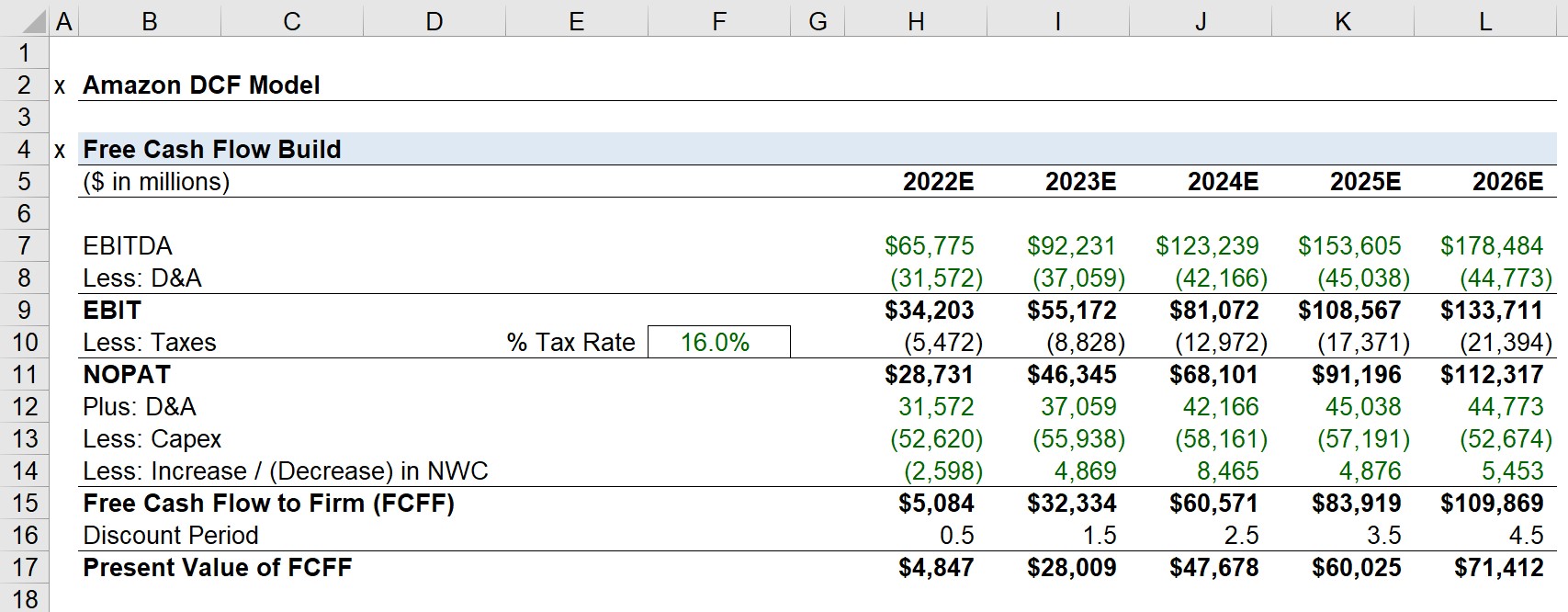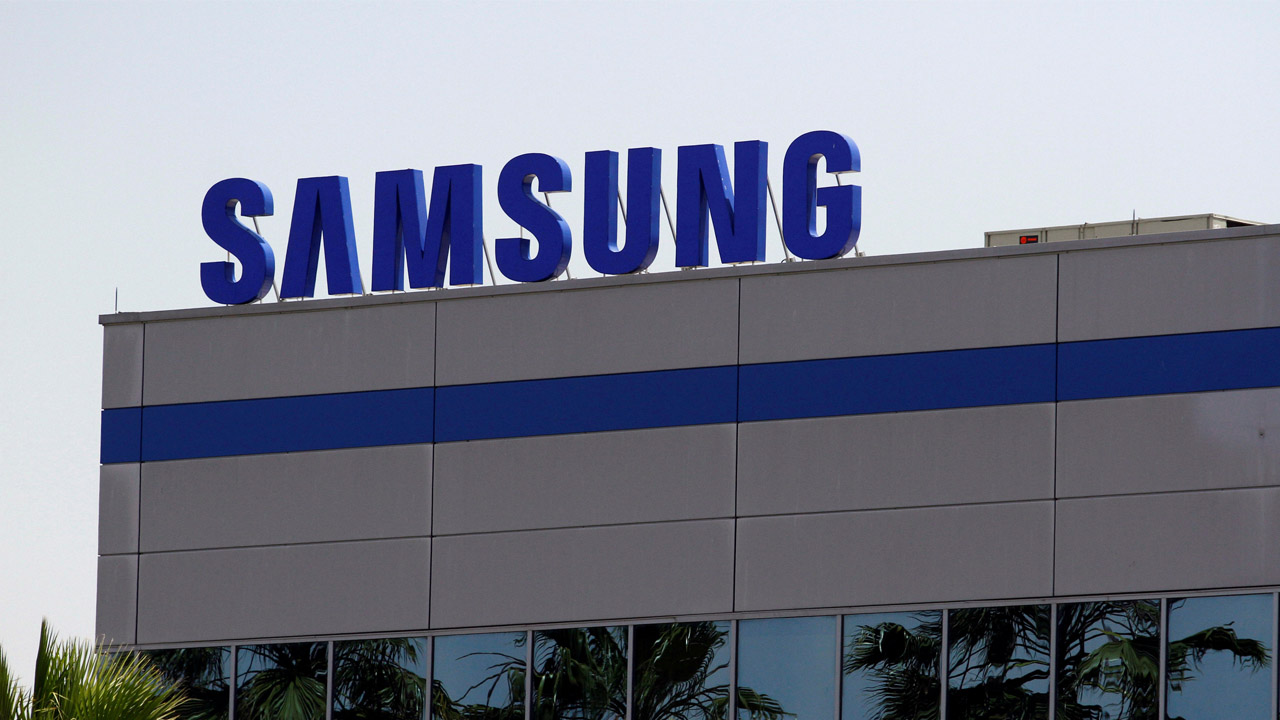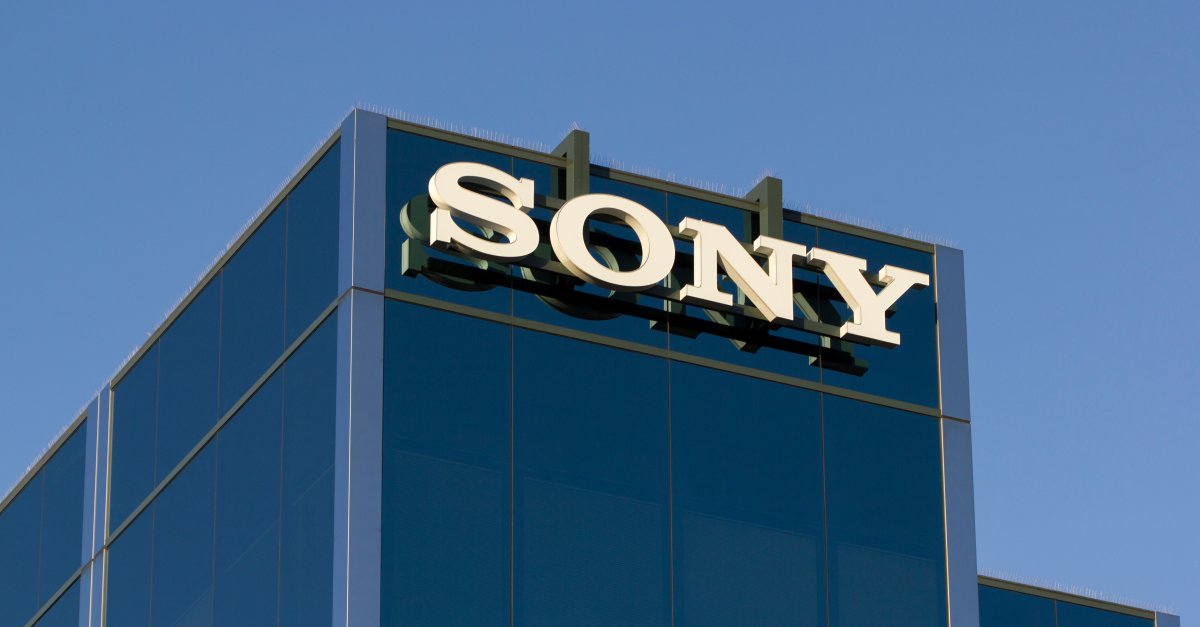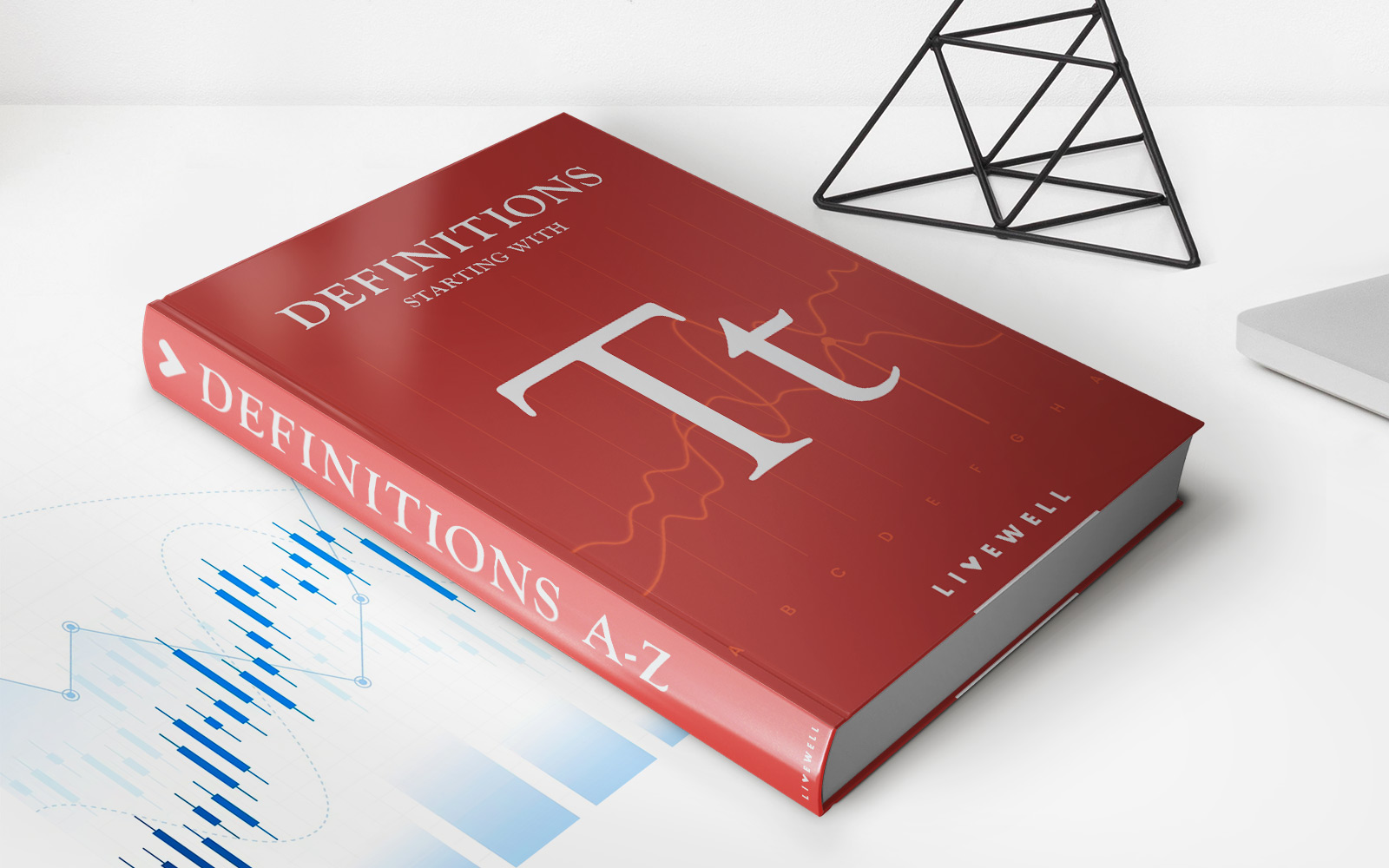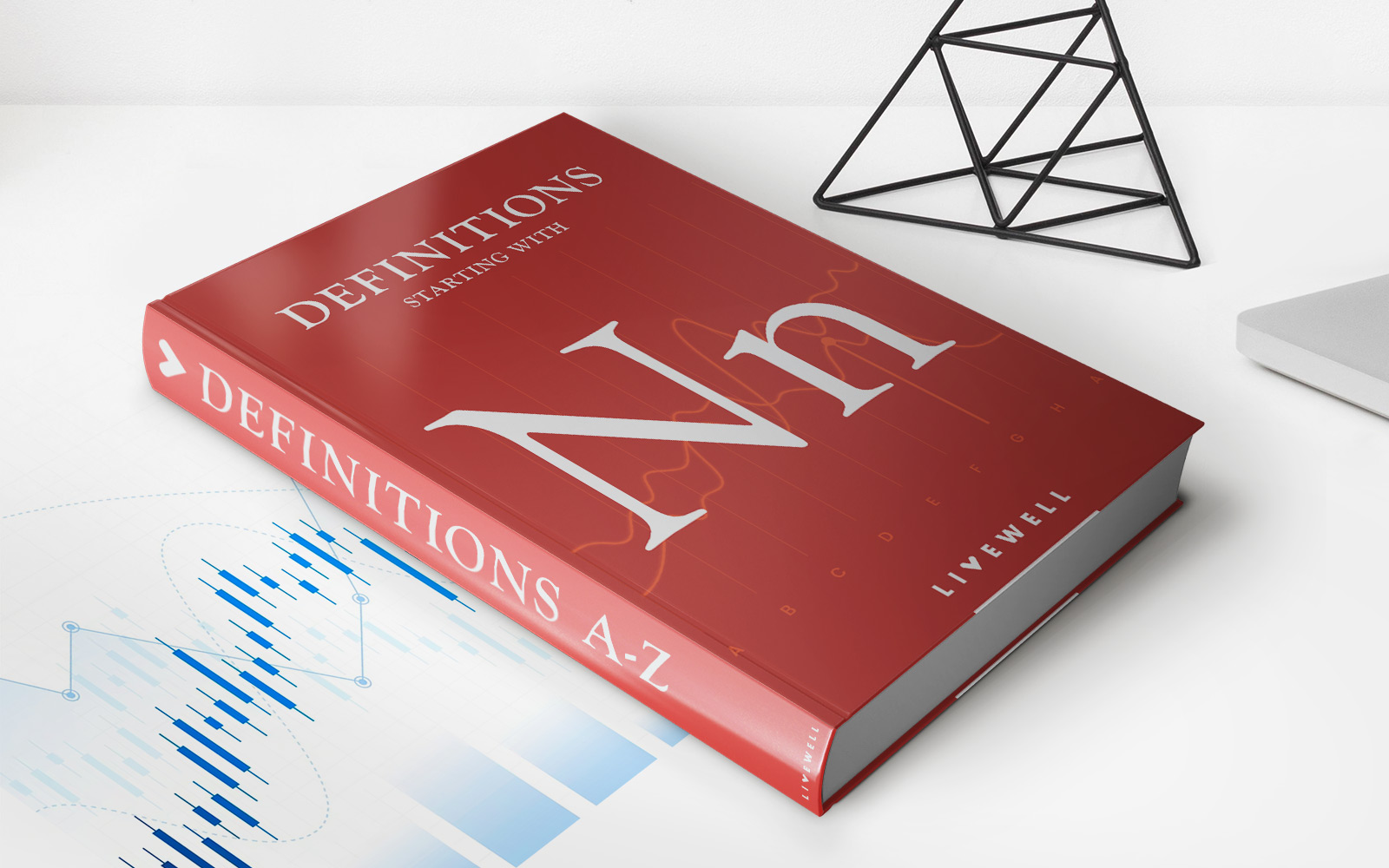Home>Finance>What Capital Structure Will Maximize The Wealth Of The Shareholder?


Finance
What Capital Structure Will Maximize The Wealth Of The Shareholder?
Published: December 25, 2023
Discover the key to maximizing shareholder wealth through strategic capital structure decisions. Explore the dynamic world of finance and unlock the potential for financial success.
(Many of the links in this article redirect to a specific reviewed product. Your purchase of these products through affiliate links helps to generate commission for LiveWell, at no extra cost. Learn more)
Table of Contents
- Introduction
- Definition of Capital Structure
- The Importance of Shareholder Wealth Maximization
- Factors Affecting Capital Structure
- Debt Financing vs. Equity Financing
- The Trade-Off Theory of Capital Structure
- The Pecking Order Theory of Capital Structure
- The Agency Cost Theory of Capital Structure
- Empirical Studies on Capital Structure and Shareholder Wealth Maximization
- Practical Considerations for Determining the Optimal Capital Structure
- Conclusion
Introduction
When it comes to making financial decisions, companies must consider various factors that can have a significant impact on their overall success. One crucial aspect that every business needs to carefully evaluate is its capital structure. The capital structure refers to the way a company finances its operations through a combination of debt and equity.
The primary objective of any business is to maximize the wealth of its shareholders. By effectively managing its capital structure, a company can optimize its financial position, increase profitability, and ultimately enhance shareholder value.
This article will explore the concept of capital structure and its relationship to shareholder wealth maximization. We will delve into the different theories and considerations that companies must take into account when determining their optimal capital structure.
Understanding the complexities of capital structure is vital for both business owners and investors, as it directly affects various aspects of a company’s financial performance. By grasping the key principles and factors involved, businesses can make informed decisions that align with their long-term goals and ultimately maximize shareholder wealth.
Definition of Capital Structure
Capital structure refers to the mix of debt and equity financing that a company uses to finance its operations and investments. In simpler terms, it represents the proportion of a company’s funds that come from debt (borrowing) and equity (shareholders’ funds).
Debt financing involves raising capital by borrowing money from external sources such as banks, financial institutions, or bondholders. This can be in the form of loans, lines of credit, bonds, or other debt instruments. The company agrees to repay the borrowed funds, along with interest, over a specified period of time.
Equity financing, on the other hand, involves raising funds by selling ownership stakes in the company. This can be done through the issuance of common stock, preferred stock, or other equity securities. Unlike debt, equity does not require repayment but entitles shareholders to a proportional share of profits and voting rights in the company.
The capital structure of a company determines the overall risk and financial stability. A high level of debt in the capital structure increases financial leverage but also amplifies the risk. On the other hand, relying more on equity financing may dilute the ownership and control of existing shareholders but minimizes the risk of bankruptcy.
It is important to note that the optimal capital structure varies from company to company and is influenced by various factors such as industry, growth prospects, profitability, asset base, and risk appetite. Striking the right balance between debt and equity is crucial in ensuring long-term financial stability and maximizing shareholder wealth.
The Importance of Shareholder Wealth Maximization
Shareholder wealth maximization is the primary goal of every company and its management. It is the fundamental principle that guides financial decision-making. The primary objective is to increase the value of the company’s shares and enhance the wealth of its shareholders. This focus on shareholder wealth maximization drives companies to make strategic choices that generate long-term financial growth and profitability.
Here are a few key reasons why shareholder wealth maximization is crucial:
1. Alignment of Interests: Shareholder wealth maximization ensures that the interests of shareholders, who are the owners of the company, are prioritized. The management’s decisions and actions are driven by the goal of enhancing shareholder value, promoting accountability and aligning the interests of various stakeholders.
2. Enhanced Market Perception: Companies that consistently deliver strong shareholder returns and increase their market value tend to be perceived positively by investors and the market. This can lead to increased investor confidence, better credit ratings, and improved access to capital markets, which can further fuel growth opportunities.
3. Attracting and Retaining Investors: Investors are attracted to companies that have a history of maximizing shareholder wealth and generating consistent returns. A strong track record of creating value for shareholders can attract new investors and help retain existing ones, thereby increasing the company’s access to capital and potential funding sources.
4. Optimal Resource Allocation: The pursuit of shareholder wealth maximization requires efficient and effective allocation of scarce resources. Companies must evaluate investment projects, strategic initiatives, and capital allocation decisions based on their potential to create long-term shareholder value. This leads to a disciplined approach to resource management and the avoidance of wasteful expenditures.
5. Motivation for Innovation: Maximizing shareholder wealth encourages companies to innovate and adapt to changing market dynamics. By seeking opportunities for growth and competitive advantage, companies can create new products, enter new markets, and drive overall business performance. This approach helps companies stay ahead of the competition and ensures long-term survival in a rapidly evolving business landscape.
It is important to note that while shareholder wealth maximization is a critical goal for companies, it should not be pursued at the expense of other stakeholders, such as employees, customers, and the wider society. Striking a balance between shareholder wealth and social responsibility is essential for sustainable long-term success and maintaining a positive corporate reputation.
Factors Affecting Capital Structure
When determining the optimal capital structure for a company, several factors come into play. These factors can vary depending on the industry, market conditions, and the specific characteristics of the business. Understanding these key factors is crucial for making informed decisions regarding debt and equity financing.
Here are some of the factors that influence a company’s capital structure:
1. Business Risk: The level of risk associated with a company’s operations impacts its capital structure decisions. Companies operating in volatile or cyclical industries may choose to have a lower proportion of debt to mitigate financial risk. On the other hand, companies with stable cash flows and lower business risk may opt for a higher proportion of debt to take advantage of the tax benefits associated with interest payments.
2. Financial Flexibility: Companies that prioritize financial flexibility may maintain a lower level of debt to have more capacity for future borrowing if needed. This allows them to adapt to changes in market conditions or pursue growth opportunities without facing excessive financial constraints.
3. Growth Opportunities: Companies with significant growth potential may choose to finance their expansion through a higher proportion of equity financing. This approach helps avoid the burden of excessive interest payments and debt obligations, giving the company more room to invest in research and development, acquisitions, and other growth initiatives.
4. Tax Considerations: The tax implications of various sources of financing can influence capital structure decisions. In many jurisdictions, interest payments on debt are tax-deductible, making debt financing more attractive from a tax perspective. This tax shield effect can favor a higher proportion of debt in the capital structure, reducing the overall tax liability and increasing after-tax profits.
5. Cost of Capital: The cost of raising funds through different sources, such as debt or equity, also affects capital structure decisions. Companies typically consider the cost of borrowing, such as interest rates, fees, and covenants, compared to the cost of issuing equity, such as dividend payments and potential dilution of ownership. A lower cost of debt may encourage higher leverage in the capital structure.
6. Market Conditions: The state of the financial markets, investor sentiment, and availability of funding sources can influence capital structure decisions. During periods of favorable market conditions and access to inexpensive credit, companies may be more inclined to take on higher levels of debt. Conversely, during market downturns or credit crunches, companies may be more conservative in their debt levels.
7. Company Size and Life Cycle: The size and life cycle stage of a company can impact its capital structure decisions. Start-ups and early-stage companies may rely heavily on equity financing, as they may have limited assets and track records to secure substantial debt funding. As companies mature and generate stable cash flows, they may transition towards a more balanced mix of debt and equity financing.
It is essential for companies to carefully evaluate these factors and strike a balance between risk, financial flexibility, growth opportunities, and cost considerations when determining their ideal capital structure. A thorough analysis of these factors and regular assessment can help companies adapt their capital structure to changing business environments and position themselves for long-term success.
Debt Financing vs. Equity Financing
When it comes to financing their operations or funding expansion plans, companies have two primary options: debt financing and equity financing. Each option has its own advantages and considerations, and understanding the differences between them is crucial for making informed capital structure decisions.
Debt Financing:
Debt financing involves raising funds by borrowing money from external sources, such as banks, financial institutions, or bondholders. Here are some key characteristics and considerations of debt financing:
- Principal Repayment: Debt financing requires the borrower to repay the principal amount borrowed along with interest over a specified period of time. This results in fixed repayment obligations for the company.
- Interest Payments: Borrowers must make regular interest payments on the borrowed amount. The interest rate on debt depends on various factors such as creditworthiness, market conditions, and the perceived risk associated with the borrowing company.
- Tax Advantage: Interest payments on debt are generally tax-deductible in many jurisdictions. This tax shield effect reduces the overall cost of borrowing and can be advantageous for companies from a tax perspective.
- Fixed Obligations: Debt financing creates fixed obligations for the company. Failure to meet these obligations can result in financial distress, damage to the company’s credit rating, and the potential for bankruptcy.
- Collateral Requirement: Lenders may require collateral, such as assets or property, as security for the loan. This provides lenders with a means to recover their funds in the event of default.
Equity Financing:
Equity financing involves raising funds by selling ownership stakes in the company, typically in the form of common stock, preferred stock, or other equity securities. Here are some key characteristics and considerations of equity financing:
- No Repayment Obligations: Unlike debt financing, equity financing does not require the company to make regular principal or interest payments. Investors receive returns on their investment through dividends and capital appreciation.
- Ownership Dilution: Issuing equity results in the dilution of ownership for existing shareholders. This means that the proportionate ownership and control of existing shareholders reduce as new investors come in.
- Investor Rights: Equity investors are entitled to voting rights and a share of profits in proportion to their ownership stake. This can result in increased monitoring and potential conflicts of interest between shareholders and management.
- Risk and Reward-sharing: Equity financing distributes the risk and reward among a wider group of investors. This can provide the company with a more stable financial position and shared liability.
- Flexibility: Equity financing provides greater flexibility as it does not create fixed repayment obligations. This can be particularly beneficial for companies during periods of economic uncertainty or when business performance is volatile.
Companies must carefully assess their financial needs, risk tolerance, and long-term goals when deciding between debt financing and equity financing. While debt financing offers tax advantages and fixed interest obligations, it increases financial risk and can limit financial flexibility. On the other hand, equity financing provides more flexibility and shared risk but can result in ownership dilution and the loss of control for existing shareholders. Striking the right balance between debt and equity financing is crucial for optimizing the capital structure and ensuring long-term financial stability.
The Trade-Off Theory of Capital Structure
The trade-off theory of capital structure suggests that companies must strike a balance between the benefits and costs of debt financing to determine their optimal capital structure. This theory recognizes that there are advantages and disadvantages to both debt and equity financing, and companies must weigh these factors when making financial decisions.
Key principles of the trade-off theory include:
- Tax Benefits: Debt financing provides companies with tax advantages since interest payments are generally tax-deductible. This reduces the overall cost of borrowing and increases the after-tax profitability of the company.
- Financial Distress Costs: Excessive leverage or high levels of debt can expose a company to financial distress. In times of economic downturn or unexpected financial difficulties, the burden of interest payments may become unsustainable, leading to potential bankruptcy or insolvency. These costs include legal fees, costs of restructuring, and potential damage to the company’s reputation.
- Optimal Debt Level: The trade-off theory suggests that there is an optimal level of debt that balances the tax benefits of debt financing against the costs of financial distress. Companies must evaluate their risk tolerance, industry characteristics, market conditions, and financial health to determine the appropriate debt-to-equity ratio.
- Cost of Financial Distress: Financial distress costs include the expected costs and losses associated with potential bankruptcy or insolvency. These costs can include the loss of customer confidence, decreased access to credit, increased borrowing costs, and disruption of business operations.
- Market Perception: The trade-off theory recognizes that investors and credit rating agencies consider a company’s capital structure when assessing its financial health and creditworthiness. A moderate level of debt may be viewed positively by investors, as it indicates a commitment to maximizing shareholder value and taking advantage of tax benefits, while excessive debt may raise concerns about the company’s ability to meet its financial obligations.
Overall, the trade-off theory suggests that companies should strive to identify the optimal capital structure that maximizes the benefits of debt financing while managing the associated costs. This balance will vary based on factors such as industry dynamics, stage of business growth, cash flow stability, and risk appetite. Regular monitoring and adjustments to the capital structure may be necessary as market conditions and business circumstances change, ensuring that the company maintains a sustainable financial position.
The Pecking Order Theory of Capital Structure
The pecking order theory of capital structure suggests that companies prioritize their sources of financing based on the cost, availability, and internal funds. According to this theory, companies have a natural hierarchy or “pecking order” in accessing funding, and they prefer to use internal funds first, followed by debt financing, and finally equity financing.
The key principles of the pecking order theory include:
- Information Asymmetry: The pecking order theory recognizes that companies possess more information about their own financial health and prospects compared to external investors. As a result, companies prefer to use their internal funds, such as retained earnings or cash flows, for financing needs. By relying on internally generated funds, companies can avoid the need to disclose sensitive information or raise external financing.
- Cost of External Financing: External financing, such as debt or equity, involves transaction costs, legal fees, underwriting costs, and potential dilution of ownership. These costs can be higher compared to using internal funds or debt financing, making them less favorable options for companies.
- Funding Availability: The pecking order theory suggests that companies resort to external financing, specifically debt, only when internal funds are insufficient to meet their financing needs. Debt financing is often seen as a more accessible and cost-effective option compared to equity financing.
- Market Reaction to Equity Issuance: The theory suggests that equity financing may be seen negatively by investors as it can dilute ownership and potentially signal that the company is facing financial difficulties. Companies are generally hesitant to issue new shares, especially when other funding options are available.
- Flexibility and Financial Constraints: Companies prefer to maintain financial flexibility by relying on internal funds or debt financing. This allows them to retain control over their operations and make investment decisions without the constraints associated with external equity financing.
The pecking order theory highlights that companies will use the most preferred and least costly financing option first, gradually moving to the next in line as the need arises. This theory helps explain why companies typically have mixed capital structures rather than a perfect balance between debt and equity.
However, it is important to note that the pecking order theory is not applicable to all companies in all situations. Some companies may choose to deviate from the pecking order based on factors such as market conditions, growth opportunities, or the availability of favorable financing options. Additionally, companies may also consider a combination of financing sources, depending on their specific needs and circumstances.
Ultimately, the pecking order theory provides a framework for understanding the general behavior of companies when it comes to their preferred sources of financing. By adhering to this hierarchy, companies can maintain financial flexibility, avoid unnecessary costs, and make efficient use of available funds.
The Agency Cost Theory of Capital Structure
The agency cost theory of capital structure examines how conflicts of interest between company management and shareholders can impact a firm’s capital structure decisions. This theory suggests that the capital structure choices made by a company are influenced by the desire to mitigate agency costs and align the interests of management with those of the shareholders.
Here are key factors and principles associated with the agency cost theory:
- Principal-Agent Relationship: The theory recognizes that a company’s shareholders act as principals, while management acts as agents who make decisions on behalf of the shareholders. The interests of management may not always align perfectly with those of the shareholders, leading to conflicts and potential agency costs.
- Debt as a Monitoring Mechanism: Debt financing can serve as a monitoring mechanism to mitigate agency costs. Lenders have an interest in ensuring the company’s financial health and timely repayment of debt. By requiring regular financial reporting, adherence to financial covenants, and imposing restrictions on management’s actions, debt providers can help align the interests of management with those of the shareholders.
- Equity as an Incentive Tool: Equity ownership can be used as a means to align the interests of management with those of shareholders. By providing managers with stock or stock options, they have a direct stake in the company’s performance and share in its financial success. This gives managers an incentive to act in the best interests of shareholders and make decisions that enhance shareholder value.
- Capital Structure and Managerial Discretion: The theory suggests that the capital structure choices made by a company can reflect the level of managerial discretion and the extent to which management is willing to commit to the interests of shareholders. A higher level of debt financing can act as a constraint on managerial discretion and reduce the agency costs associated with managerial opportunism.
- Optimal Capital Structure and Agency Costs: The agency cost theory does not prescribe a specific optimal capital structure. Instead, it recognizes that the optimal capital structure will depend on the specifics of the firm, the industry, and the corporate governance mechanisms in place. Companies aim to strike a balance that minimizes agency costs while maximizing shareholder wealth.
By understanding the agency cost theory, companies can design compensation plans, governance structures, and capital structures that align the interests of management with those of shareholders. Companies may also employ external monitoring mechanisms such as external auditors, independent board members, or shareholder activism to further mitigate agency costs.
It’s important to note that while the agency cost theory provides insights into the relationship between capital structure and agency costs, it is only one perspective on the complex dynamics that exist within a company. Other theories and factors, such as market conditions, risk profile, and financial goals, should also be considered when making capital structure decisions.
Empirical Studies on Capital Structure and Shareholder Wealth Maximization
Empirical studies have examined the relationship between capital structure decisions and the maximization of shareholder wealth. These studies utilize financial data and statistical analysis to understand how different capital structures affect a company’s value and the wealth of its shareholders. While findings may vary, there are several key insights that emerge from empirical research:
- Optimal Debt Ratios: Empirical studies suggest that there exists an optimal level of debt that maximizes shareholder wealth. Too much debt may increase financial risk and bankruptcy probability, while too little debt may limit the company’s ability to take advantage of tax shields and financial leverage.
- Tax Benefits of Debt: Numerous studies have shown that the tax deductibility of interest payments reduces the effective cost of debt financing, leading to an increase in the value of the firm and subsequently enhancing shareholder wealth.
- Modelling Trade-Offs: Researchers have developed various frameworks to model the trade-offs companies face when choosing their capital structure. These models incorporate factors such as bankruptcy costs, agency costs, tax advantages, and market frictions to provide insights into the optimal balance between debt and equity.
- Industry and Firm-Specific Factors: Empirical studies recognize that industry characteristics and firm-specific factors can significantly influence the relationship between capital structure decisions and shareholder wealth maximization. Factors such as profitability, growth opportunities, asset tangibility, and volatility play a role in determining the optimal capital structure for a specific company.
- Timing and Market Conditions: Empirical research has shown that market conditions and timing can impact the relationship between capital structure decisions and shareholder wealth. Factors such as interest rates, cost of capital, and market sentiment can influence the attractiveness of debt financing and equity issuance, leading to variations in the optimal capital structure.
- Company Size and Life Cycle: Studies indicate that the optimal capital structure may vary depending on the size and life cycle stage of the company. Start-ups and smaller firms may exhibit different capital structure preferences compared to established, mature companies. Financial flexibility, growth prospects, and access to funding sources can influence these differences.
While empirical studies provide valuable insights, it is important to note that the results can be influenced by various factors, such as data limitations, sample selection, and model assumptions. Additionally, studies may reflect the experiences of specific industries, markets, or time periods, making it crucial to interpret the findings in a broader context.
Overall, empirical studies have contributed to the understanding of the relationship between capital structure decisions and shareholder wealth maximization. They provide guidance to companies by highlighting the importance of considering factors such as tax benefits, trade-offs associated with debt and equity financing, industry characteristics, and market conditions when making capital structure choices.
Practical Considerations for Determining the Optimal Capital Structure
Determining the optimal capital structure for a company is a complex decision that requires careful consideration of various factors. Here are practical considerations that can guide companies in making informed choices:
- Financial Goals: Clearly define the company’s financial goals and objectives. This includes considerations such as maximizing shareholder wealth, maintaining financial stability, funding growth opportunities, and managing risk.
- Business and Industry Characteristics: Analyze the unique characteristics of the business and the industry in which it operates. Consider factors such as cash flow stability, growth potential, capital intensity, and competitive landscape. Different industries may have varying optimal capital structures.
- Risk Tolerance: Assess the company’s risk tolerance and its ability to manage financial risk. The level of risk the company is willing to undertake will impact the proportion of debt and equity in the capital structure. Higher risk tolerance may allow for higher leverage, while lower risk tolerance may lead to a more conservative capital structure.
- Cost of Capital: Consider the cost of capital for both debt and equity. Evaluate the interest rates, fees, and other costs associated with debt financing as well as the expected returns and dilution effects associated with equity financing. Strive to minimize the overall cost of capital to maximize shareholder returns.
- Tax Implications: Take into account the tax implications of different financing options. Understand the tax deductibility of interest payments and consider the impact on the effective cost of debt financing. Assess the potential tax consequences associated with equity financing.
- Access to Capital Markets: Evaluate the company’s access to capital markets, including the availability of debt financing and equity issuance. Consider the company’s creditworthiness, market conditions, and investor appetite. Companies with limited access to capital markets may need to rely more on internal funds or prioritize debt financing over equity financing.
- Financial Flexibility: Assess the desired level of financial flexibility and the need for liquidity. Evaluate the company’s ability to handle fluctuations in cash flow, unexpected expenses, and growth opportunities. Consider the potential need for future borrowings or the ability to access additional equity capital.
- Corporate Governance: Consider the company’s corporate governance policies and mechanisms that can influence capital structure decisions. Evaluate the role of the board of directors, independent directors, and shareholders in setting and monitoring the capital structure to ensure alignment with shareholder interests.
It is important to note that determining the optimal capital structure is not a one-time decision but an ongoing process. Regularly reassess the capital structure in light of changing market conditions, financial performance, and strategic priorities. Balance the need for stability with the capacity to adapt as the business landscape evolves.
Consulting with financial advisors and professionals can provide valuable insights and expertise in guiding capital structure decisions. Additionally, analyzing historical data, conducting scenario analysis, and considering the experiences of peer companies can further inform the decision-making process.
By considering these practical considerations and conducting a thorough analysis, companies can make informed choices that align with their financial goals, maximize shareholder wealth, and support long-term sustainable growth.
Conclusion
Capital structure decisions play a vital role in determining the financial health and success of a company. Optimizing the capital structure is essential for maximizing shareholder wealth and ensuring long-term sustainability. Throughout this article, we have explored various aspects related to capital structure and its relationship to shareholder wealth maximization.
We began by understanding the definition of capital structure, which refers to the mix of debt and equity financing used by a company. We then delved into the importance of shareholder wealth maximization as the primary goal of every business, aligning the interests of shareholders and management to enhance value.
We explored factors that influence capital structure decisions, such as business risk, financial flexibility, growth opportunities, tax considerations, market conditions, and company size. These factors help companies strike a balance between debt and equity financing that aligns with their specific circumstances and objectives.
Additionally, we discussed the trade-off theory of capital structure, which highlights the balancing act companies face in managing the benefits and costs of debt financing. The pecking order theory emphasized the natural hierarchy of financing preferences, with companies favoring internal funds, followed by debt financing, and, as a last resort, equity financing.
The agency cost theory shed light on the potential conflicts of interest between management and shareholders in capital structure decisions, and the need to align their interests through monitoring mechanisms and incentive structures.
We explored empirical studies that provide insights into the relationship between capital structure decisions and shareholder wealth maximization. These studies highlight the optimal debt ratios, tax benefits of debt, industry and firm-specific factors, market conditions, and the impact of company size and life cycle.
Ultimately, determining the optimal capital structure requires practical considerations such as financial goals, industry characteristics, risk tolerance, cost of capital, tax implications, and financial flexibility. Regular evaluation and adjustment of the capital structure ensure alignment with the company’s evolving needs and market dynamics.
In conclusion, by carefully considering these factors and incorporating insights from theory and empirical research, companies can make informed decisions about their capital structure. Striking the right balance between debt and equity financing will enhance financial performance, maximize shareholder wealth, and pave the way for sustainable growth and success in the dynamic business landscape.

